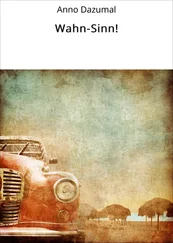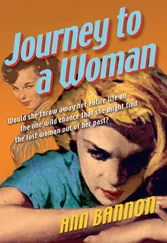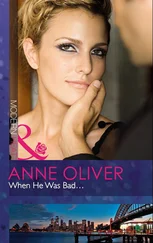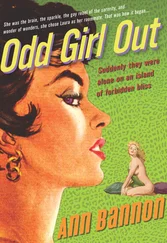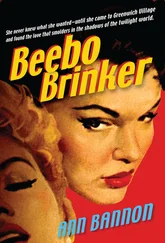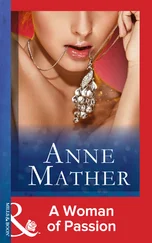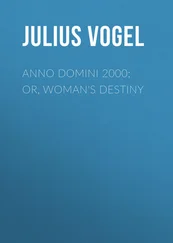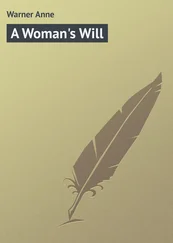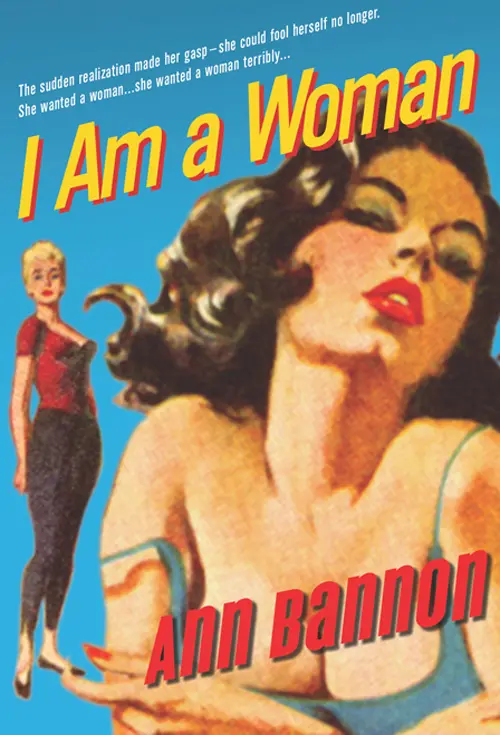
Ann Bannon

www.spice-books.co.uk
Before you start reading, why not sign up?
Thank you for downloading this Mills & Boon book. If you want to hear about exclusive discounts, special offers and competitions, sign up to our email newsletter today!
SIGN ME UP!
Or simply visit
signup.millsandboon.co.uk
Mills & Boon emails are completely free to receive and you can unsubscribe at any time via the link in any email we send you.
Cover
Title Page I Am a Woman Ann Bannon www.spice-books.co.uk
Introduction
Chapter One
Chapter Two
Chapter Three
Chapter Four
Chapter Five
Chapter Six
Chapter Seven
Chapter Eight
Chapter Nine
Chapter Ten
Chapter Eleven
Chapter Twelve
Chapter Thirteen
Chapter Fourteen
Chapter Fifteen
Chapter Sixteen
Chapter Seventeen
Endpages
Copyright
Many years ago, when this book was in its final creative stages, I had a lucky invitation to come to New York and finish it in the home of friends of friends. They were young career women, living in a very small apartment in a very old building on the Upper West Side of Manhattan, near Columbia University. Luckier still, they were on the top floor, and in the hallway outside their front door stood a dubious flight of stairs that took one to the roof. There I repaired when I got stuck, or the typewriter fought back, or the coffee ran out, and gazed out at marvelous Manhattan. I especially liked going up there after dark, when the great city was spread out like a carpet of sparklers, brilliant with promise. I had just invented Beebo Brinker for this book, and with the intensity of youth, I imagined her real-life counterpart out there somewhere, down in the Village going about her business, while I, on my roof, was trying to capture her story. I spent a fair amount of time leaning on the crumbly old parapets, staring deep into the lights and wondering if there were a real Beebo on this planet. If there were, would I ever meet her? Would she be like the woman I had contrived out of sheer need so she would at least exist somewhere in the world, even if only in the pages of my book? Was there anybody like her anywhere? Big, bold, handsome, the quintessential 1950s buccaneer butch, she was a heller and I adored her.
Not once did it occur to me to wonder if other people would ever know or care about Beebo Brinker. Not once did I ask myself if other women would fall under her spell, if readers would be amused and engaged by her, if she would develop a life of her own that would carry her across the decades until I would find myself sharing her with the rest of the world. What I wanted to know was, Would she be there for me, more real than reality? Would she rescue me from the frustration and isolation of a difficult marriage, from the impatience to be my own person before circumstances made it possible, from all the personal needs deferred in the interests of cherishing my children and finding my way in this life? It was a lot to dump on a fictional character. But she was my creature, my fantasy—and once conceived, she stood up and, with her broad shoulders, helped me lift my burdens.
Up there on that long-ago rooftop, I didn’t foresee Beebo’s future, but I did try to glimpse my own. Looking out at all those bright electric blooms spread at my feet, I pondered, If each one were a reader, how many would remember the name of Ann Bannon? Would I ever come back to Manhattan some day to acclaim? Reluctantly I acknowledged the realities: I was writing paperback pulp fiction. The Beatles had yet to glamorize the “Paperback Writer.” The stories were ephemeral; even the physical material of the books was so fragile that it hardly survived a single reading. The glue dried and cracked, the pages fell out, the paper yellowed after mere months, and the ink ate right through it anyway. The covers shouted “Sleaze!” The critics ignored the books in droves, and “serious” writers were going to the hardback publishers. Of course, we did have readers. People were grabbing the pulps off drugstore shelves and bus station kiosks, and reading them almost in a gulp. But then they tossed them in trash cans and forgot them. Given this precarious bit of fleeting notoriety, I had not yet even mustered the courage to acknowledge my authorship to friends and family, much less to the public. No, there was no immortality here for Ann Bannon.
So I worked on I Am a Woman under no illusions about the prospects for enduring fame. That I am sitting down to share this with my readers forty-five years and five editions later is a true astonishment. But the perdurable appeal of the butch-femme dichotomy is not. It has, however, undergone some interesting changes.
When I was writing I Am a Woman , the unquestioned role choices open to lesbians were two: butch or femme. As Robin Tyler has observed, even if you weren’t sure which one you were, you wanted to be butch, because they didn’t have to do the dishes. Well, maybe it wasn’t that simple for everyone, but women generally were not nearly as experimental with those roles as they later became. Butches were strong, tough, heroic, romantic. They fought battles in back alleys over femmes and were quite capable of ruling the roost. The femmes, by contrast, could be more girly; some were, in a way, early examples of “lipstick lesbians.” They might appear seductive, compliant, even pretty. It was almost a mirror image of mainstream society: the guy-gals and the gal-gals. It was exciting, sexy, and dramatic. But it was also confining, and as the Women’s Movement unfolded in the ‘60s and ‘70s, it began to seem rigid and outdated. This was no way to run a romantic partnership, with one member always on top, one always on the bottom.
As so often happens when the pendulum swings, it swings the old ways right out of the ballpark. The butch-femme dichotomy was rejected altogether for a while, replaced with more egalitarian liaisons. But it always exerted a tug on the heart, propelled by the sheer charisma of the archetypal bulldyke: independent, sensual, provocative, and more than a little dangerous. Today, among young women, it seems to have a place again, as long as it is recognized as a choice. But when Laura met Beebo in that lesbian bar called The Cellar all those years ago, both women were already locked into the paradigm. Laura was feminine in the traditional way. Her defenses, her fear of emotional entanglement, quickly melted under the laser of Beebo’s sexual focus. And on her side, Beebo was intrigued by Laura’s beguiling femaleness.
I knew of no other way to write about them. Interestingly, I had tried other things. After Odd Girl Out , my first book, was published, I completed about a hundred pages of what was to be the second book for Fawcett Publications. They were the publishers of the Gold Medal Series, under whose imprint all my books were originally published. The editor, Dick Carroll, saw those pages and hated them. I was trying to “go straight,” thinking it would be easier to face friends and family as an author with at least one conventional romance under my writer’s belt. But Dick discerned at once that, whatever the merits of the plot, I didn’t even like my characters; it was not possible to care how their lives turned out. They did not, as good characters must, talk to me at all.
Читать дальше



